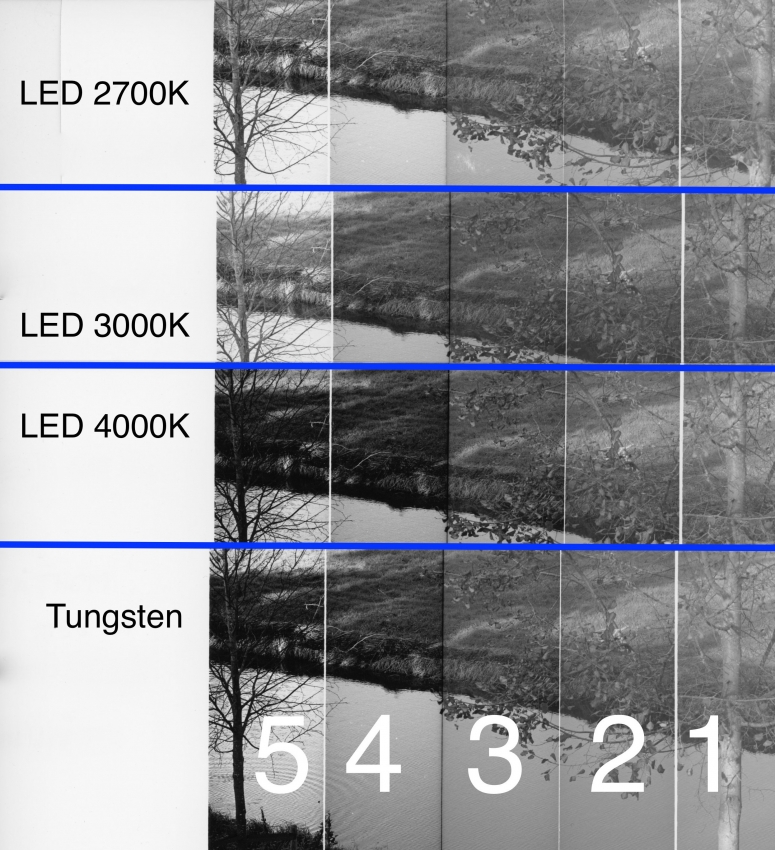Paul Howell
Subscriber
I just switched to a GE LED 100 Watt Reveal Equivalent 2850K blub, printed on Multitone VR and Slavich grade 2, Foma grade 3, looks to be very close match to standard a bulb, instant on and off. Workd as well in my D3 as Opemus, at least with 35mm in the next day or so will try MF and 4X5. I need to find a 75watt equivalent, the big box home improvement center only had 60 and 100 in the Reveal line.











